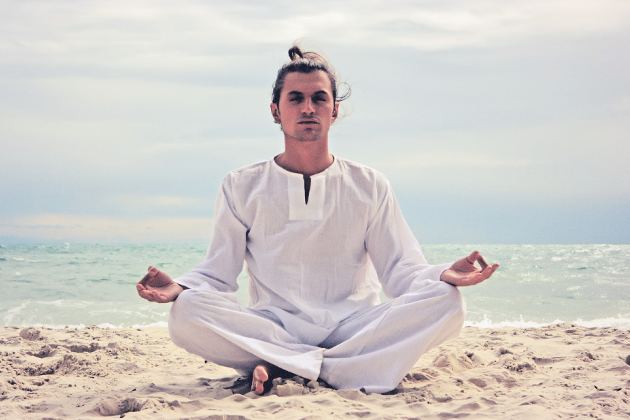It’s known as the oceanic breath, breath of victory, or perhaps more jokingly as the Darth Vader breath. If you go to any Ashtanga yoga class, you’ll know it right away.
Ujjayi pranayama is one of the first breathing techniques you’re invited to integrate with your asana practice. When done mindfully, ujjayi breath is warming and cleansing; it can energize as well as calms and balances.
With this kind of breathing practice in your tool kit, your experience on the mat can be transformed from clumsily huffing and puffing through an exercise routine to an ease-filled and powerful movement meditation.
I learned that memorable lesson about a year or so into my yoga practice.
Though many teachers had mentioned ujjayi breath in class, I never really knew what it meant. In those early days, I was so focused on getting the poses “right,” that the breath was virtually forgotten, and since breathing is a fairly subtle action, I’d fake it.
When we were instructed to lead our movements with the breath, I’d just move into the pose while holding my breath, and then squeeze out a breath or two before moving to the next pose.
If it was a particularly fast-moving practice, eventually, I’d be covered in sweat, panting hard, trying desperately to get oxygen into my body, and nowhere near a peaceful state of mind. Ultimately, I was tiring myself out faster and making my practice harder (and not in a good way).
Learning How to Breathe
Thankfully, I walked into a class with an observant teacher named Sarah. About half way through the class, I can only assume I looked anything but graceful as we moved from pose to pose.
When we were resting on our hands and knees, Sarah kneeled next to my mat and asked me to watch her while she demonstrated ujjayi. With lips closed, she inhaled and exhaled while making a soft hissing sound. Something clicked for me, and I finally understood how to cultivate the breath.
Afterwards, my practice became much more effortless. My sweating decreased tremendously—because I was no longer struggling to breathe—and my movements became so much more efficient and powerful because they were actually synced with my breath.
I believe it was this integration of ujjayi breath that broke through a large barrier in my practice for me. (Thank you, thank you, Sarah!)
Explaining ujjayi pranayama breathing can be a bit tricky without an audiovisual demonstration like Sarah gave me, but I’ll do my best here. I hope this makes things a bit clearer and do feel free to let me know if questions come up!
1. Start with some simple sounds.
Some traditions encourage you to focus on the sound of the breath during inhalations and exhalations. The way I learned ujjayi linked the sound “SA” to the inhale and “HA” to the exhale. The combination of the two sounds create that oceanic echo, like what you hear when you cup a seashell over your ear.
2. Direct the breath to the back of the throat.
On the inhalation, gently constrict your throat so the base of the tongue contracts slightly. As the base descends, the tip of the tongue gently presses upwards against your palate. When you sip in air through the nose it will sound like a soft, drawn out “SA.” Let the inhalation last 3 to 4 seconds to start.
3. Release the wave of breath with a-HA
As you start this practice, you can exhale with your lips open and softly whisper “HA.” To make this sound, your entire tongue drops so you can gently push the air out. Eventually, once you’re comfortable with this method, keep the lips closed as you whisper “HA” on the exhalation.
You can work to match the length of the exhalation to the length of your inhalation.
4. Finally: don’t force it. The waves will come.
You are breathing through your nostrils with both lips closed, but it is not as pronounced as a regular breath. It seems almost passive. You shouldn’t have to force or harden anything to breathe. Let the breath be smooth and continuous, and the soothing echo of the ocean resonates almost automatically.
The more comfortable you get with ujjayi pranayama breathing, the longer your breaths can last, and you can better link it to your movements on the mat for a more powerful and integrated practice. Here’s to your next victorious breath!


